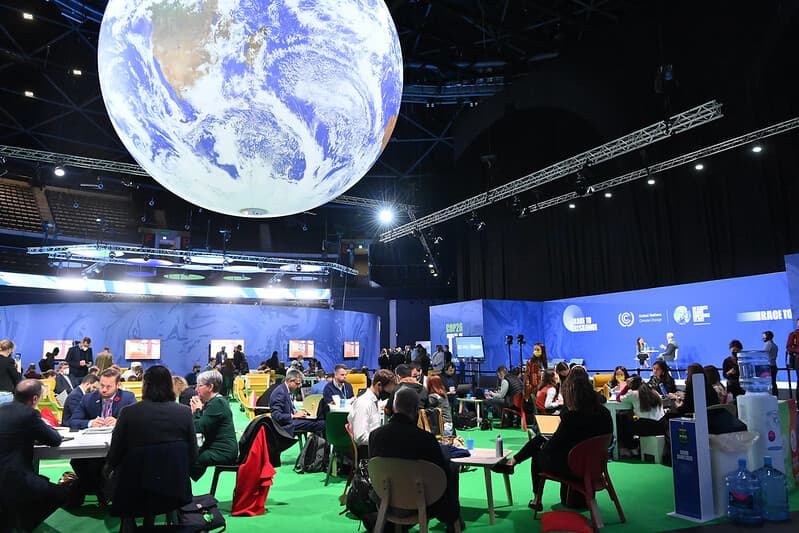A month on from COP 26 – what was achieved?

From the 31st of October to the 12th of November, Glasgow hosted the COP 26, we’ll dive into the outcome of this and the support that it lends to renewable industries in the coming years. COP 26 stands for the 26th UN Climate Change Conference of the Parties and was hosted with the intention of bringing climate experts and heads of states together to create meaningful change. Although some of the progress made will be hard to track or police, the pledges are indicative of the changes in state policy towards climate change. The topics of discussion can be broken down into the following 7 main categories.
Emissions
One of the main aims of COP 26, and all other climate change summits, is to ensure that emissions of carbon dioxide are continually reduced to limit their greenhouse effects. Although it was agreed that countries will meet next year to pledge further cuts to emissions, this has now been emphasised as an essential because current pledges are only predicted to limit global warming to 2.4 degrees (not the goal of 1.5°C that was set during the 2015 Paris agreement).
Coal
Although there was discussion of a commitment to ‘phase out’ coal entirely, this was later changed to a ‘phase down’ approach instead. Countries such as India and China were very resistant to the phasing out idea due to their ongoing heavy dependence. Despite this, coal was named for the first time as a root cause of global warming – a stance that hasn’t been seen before. Unfortunately, this ‘phase down’ stance is hard to quantify so it will likely require further agreements to make more progress.
Fuel Subsidies
Leaders globally have made a commitment to reduce (and then remove entirely) any subsidies that artificially reduce the prices of fossil fuels such as coal, oil and natural gas. These subsidies are now being seen as encouraging dependence on these energy sources despite there sometimes being more viable renewable solutions. Once again, there’s no set dates yet for when this will be enacted however the hope is that it will push consumers towards carbon-neutral or renewable energy sources.
Developing Countries
A major financial pledge was made to assist developing nations in dealing with the effects of climate change and to also support their transition to renewable energy sources. Despite a previous pledge that never materialised but which offered £72bn/year by 2020, a newer pledge will potentially make a trillion dollars (£760bn) available each year for this. To find out about the government funding available for renewables in the UK, click here.
Trees
One of the larger achievements to come out of COP 26 was a commitment to slowing and stopping ongoing deforestation. A total of 110 countries, that contain around 85% of the total rainforest coverage, have all signed a pledge to end and reverse deforestation by 2030. This has been backed by £14bn of funding, with an additional £1.1bn fund established to protect the Congo basin – home to the second largest tropical rainforest.
Methane
Although some of the world’s largest methane producers refrained from this agreement (namely China, Russia and India), more than 100 countries have agreed on a scheme to reduce methane emissions by 30% by 2030.
Additionally, a flurry of other agreements were made, between financial organisations and between individual nations. We now look forward to the next UN Climate Change Conference, in Egypt in 2023 to see the progress that’s been made and to examine further plans for the future. If you’re interested in learning more about renewables, browse our renewable solutions and insights.


